Scaling up Nordic climate solutions for Lithuania and Latvia
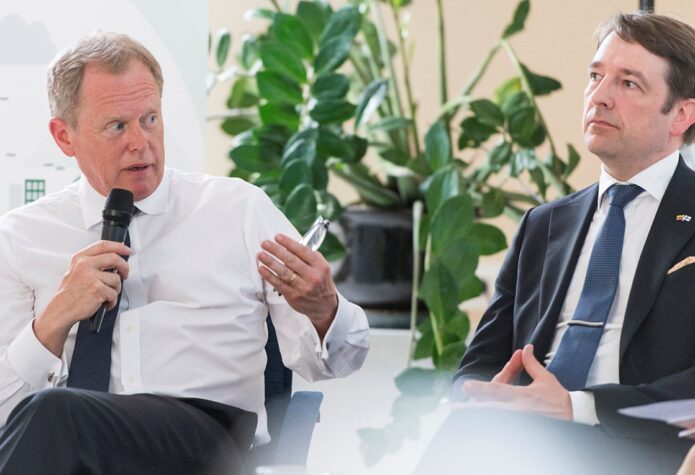
In late May, NIB participated in the presentations of the study “Nordic Green to Scale” in Vilnius and Riga, the capitals of Lithuania and Latvia.
The “Green to Scale” series of projects was initiated by the Finnish Innovation Fund Sitra and SEI Tallinn, who produced the final report. The Nordic Council of Ministers provided financial support. The events in Vilnius and Riga were organised by the Nordic council of Ministers offices and Sitra, in co-operation with the Nordic Investment Bank.
Lithuania: ambitious goals
“How far can we go in tackling climate change using solutions that we already have?” This question was discussed by representatives of the Lithuanian government, industry and environmental analysts at a presentation of the Nordic “Green to Scale” project in Vilnius on 29 May.
When it comes to climate action, this is an interesting time for Lithuania. The country has just set out an ambitious national energy strategy that aims to foster competitive local electricity generation and reduce its dependence on fossil fuels and energy imports.
Now, Lithuania’s goals have been measured against the results of a new Nordic study on climate solutions, “Green to Scale”.
“Lithuania recognises the contribution it can make to tackling climate change, and the Green to Scale project has raised a number of issues that are reflected in our energy strategy”, said Mr Kęstutis Navickas, Lithuania’s Minister of the Environment, at the presentation of the study’s results on 29 May in Vilnius.
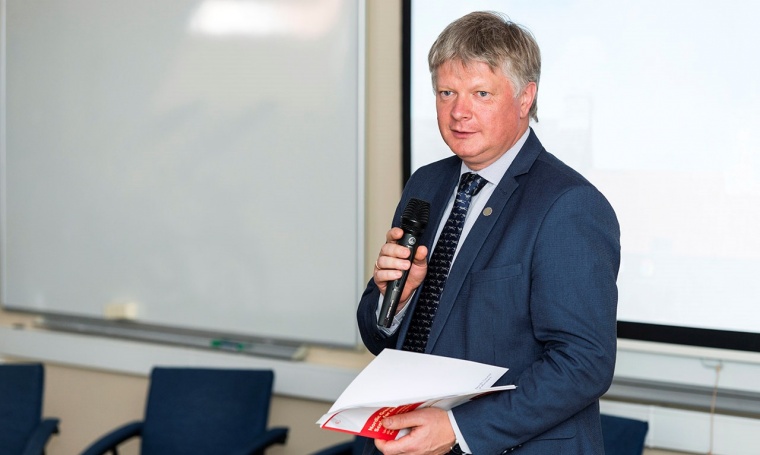 Mr Kęstutis Navickas, Lithuania’s Minister of the Environment addressing the results of the “Green to Scale” report. Image: Ludo Segers.
Mr Kęstutis Navickas, Lithuania’s Minister of the Environment addressing the results of the “Green to Scale” report. Image: Ludo Segers.
“Green to Scale” is a series of analysis projects that highlight the potential of scaling up already existing climate solutions in order to cut emissions. The latest project in the series focuses on ten climate solutions that could reap tangible benefits in the Baltic countries, Poland and Ukraine.
For Lithuania, the study identified onshore wind and solar energy as the most promising options.
“We are aiming to increase the share of renewable energy to 45% by 2030, and up to 80% or more by 2050.This can only happen if we promote wind and solar power, and invest in energy efficiency – especially in buildings and industry”, agrees Mr Vidmantas Macevičius, Lithuania’s Vice-Minister of Energy.
According to “Green to Scale”, promoting these solutions has the potential of cutting emissions in Lithuania by around 5.9 million tonnes by 2030. This would be more than twice as much as Iceland produces today.
“Lithuania is already investing in a number of projects that contribute to achieving these targets, including renovating buildings and wind power”, Mr Macevičius points out. “However, we are still facing challenges, for example in the transport sector. We hope to use the recommendations outlined in the study to achieve our goals in this area as well.”
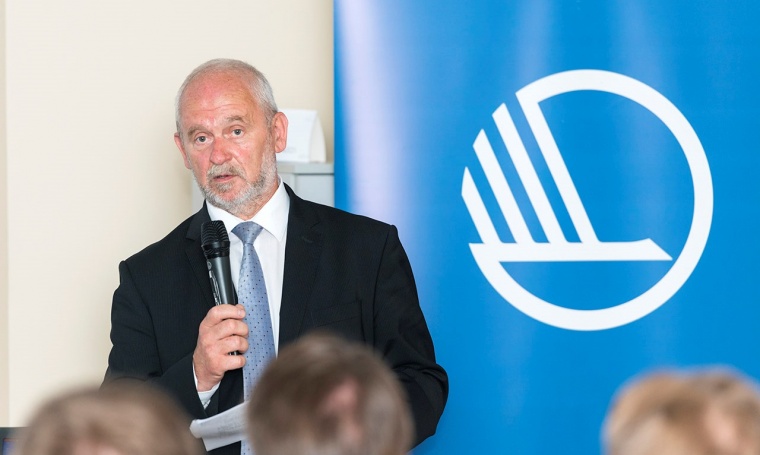 Mr Vidmantas Macevičius, Lithuania’s Vice-Minister of Energy. Image: Ludo Segers.
Mr Vidmantas Macevičius, Lithuania’s Vice-Minister of Energy. Image: Ludo Segers.
Deepening Nordic–Baltic cooperation
“Having a study that covers the three Baltic countries as well as Poland and Ukraine allows us to compare different scenarios in our neighbourhood, and shows us where we are and where we would like to be”, said Mr. Navickas.
Mr Oras Tynkkynen, Senior Advisor on carbon-neutral circular economies at the Finnish Innovation Fund Sitra, agrees. “Implementing successful climate technologies is a mutual learning process, in which the Nordic and Baltic countries can benefit from each other’s experiences. Sharing these experiences will support us in making faster progress.”
“The next steps will have to take place in practical terms, by focusing on the policy making process and directing attention to the solutions we have identified. Lithuania’s energy strategy is promising in this respect.”
Despite good intentions, the investment cost of some of the solutions can still pose a barrier.
“Some of the solutions we discuss in the report can be cost-effective, and may even save money in the long run, such as energy efficiency improvements in industry and buildings. Others may require relatively large upfront investments, which can hinder successful implementation”, said Mr Tynkkynen.
Mr Søren Mortensen, Head of Origination at NIB, discussed existing financing options in the Nordic and Baltic countries.
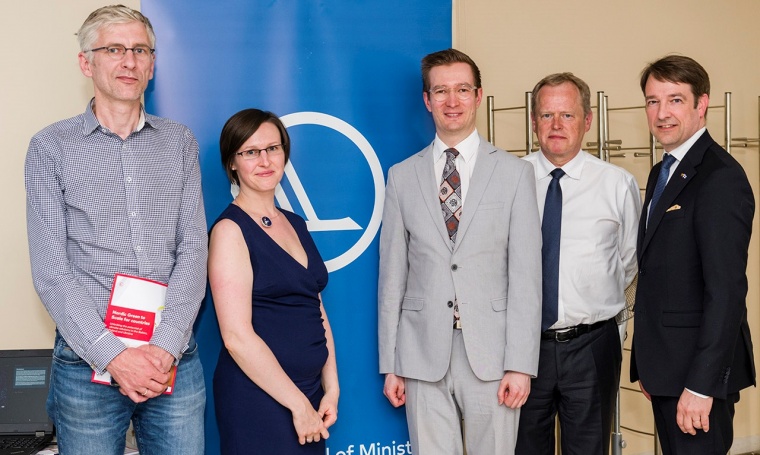 From left: Martynas Nagevičius, Lithuanian Renewable Energy Confederation; Gintarė Krušnienė, Nordic Council of Ministers Lithuania; Oras Tynkkynen, Sitra; Søren Mortensen, NIB and Kristian Rehnström, Fortum. Image: Ludo Segers
From left: Martynas Nagevičius, Lithuanian Renewable Energy Confederation; Gintarė Krušnienė, Nordic Council of Ministers Lithuania; Oras Tynkkynen, Sitra; Søren Mortensen, NIB and Kristian Rehnström, Fortum. Image: Ludo Segers
“Climate mitigation requires well-defined projects”, said Mr Mortensen. “Investments such as these are large, and they need long-term financing. However, there is no alternative to sustainability, and we are seeking to maximise the positive impact of the projects we finance.”
Seeking for more opportunities in Latvia
On 30 May, a NIB team participated in the presentation of the study in Riga, the third of the Baltic string of the Green to Scale events.
The event gathered eighty participants—from members of academia and non-governmental organisations to representatives of the business community and governmental agencies.
Latvia’s Minister of Economy, Advils Ašeradens, said at the event that Latvian companies and development institutions issue green bonds and a nation-wide network of charging points for electric cars is being developed.
Other speakers underscored the importance of locally developed knowledge in the development of low-carbon solutions. Fortum country manager, Julia Sundberg said that more opportunities for investments are needed to implement modern technologies in power production. Evija Pudāne of Cleantech Latvia drew attention to the lack of knowledge of modern energy efficiency technologies in Latvia.
In a keynote to the event, NIB’s First Vice-President and Head of Lending, Thomas Wrangdahl, presented the Bank’s model of financing projects that, similarly to the Nordic Green to Scale model, promote energy and resource efficiency, as well as an increased emphasis on using renewable sources in the production of power.
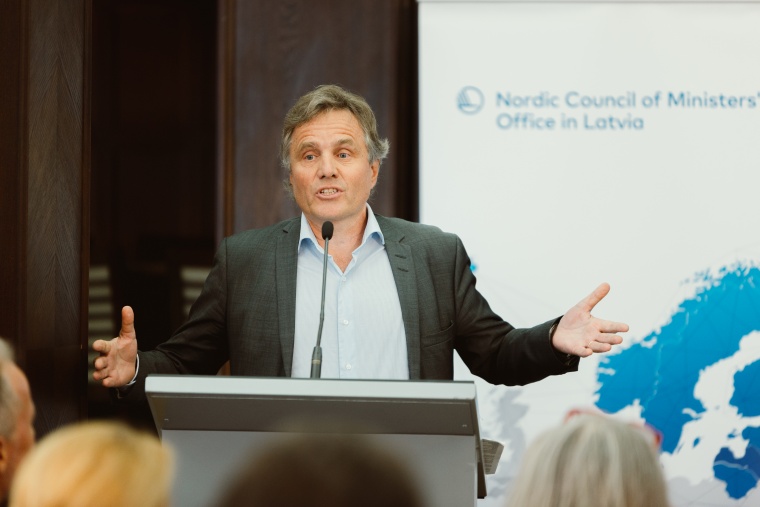
Thomas Wrangdahl at the event in Riga. Image: Ansis Vegners / Sitra / Norden.lv
“We are working towards complying with the UN Sustainable Development Goals that define a roadmap for dealing with economic, environmental and social challenges as part of the global 2030 Agenda for sustainable development”, he said.
NIB’s financing to green building projects in the Nordic and Baltic countries has been on the rise in recent years. For this purpose, the Bank uses the proceeds of its green bonds.
“There is a lot of potential to scale climate solutions, especially in the field of energy efficiency. We would like to do more and support this development in the Baltics.”
“We measure every project from environmental and productivity point of views, and they easily go hand in hand. Diversity of energy sources is good for both productivity and the environment”, said Thomas Wrangdahl at the event.
Read more: